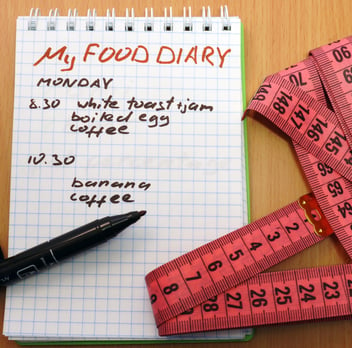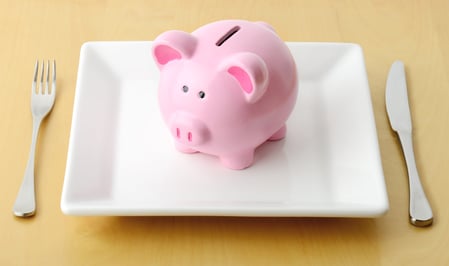 You know you want and need to have a regular plan for your exercise, but where do you begin to
You know you want and need to have a regular plan for your exercise, but where do you begin to
develop an exercise program? Here are my best tips for creating a workout regimen that will work for you whether you are in your corporate fitness center, or at home and on the go.
Setting Goals
Setting goals establishes a justifiable reason for consistent exercise. Having a goal in place can also improve commitment and has been shown to improve adherence to programs and routines. The SMART system was designed as an acronym to help with goal setting. SMART stands for Specific, Measurable, Attainable, Relevant, and Timely. Ideally, established goals should be characterized by these five words. Following the SMART guideline can improve the chances that you will achieve your goals.
The Mind-Muscle Connection
When it comes to resistance exercise, building muscle and strength is about much more than going through the motions. As you would imagine, concentration is an important part of achieving any goal, and focused concentration becomes even more important during resistance training. This focused concentration during weightlifting is the mind-muscle connection, and refers to contracting or tensing a muscle not only through physical movement, but also through thought. An example of someone incorporating the mind-muscle connection would be an individual performing a biceps curl and focusing their concentration on slowly flexing the elbow joint using the biceps muscle, as opposed to just going through the movement.
Variety
Whether speaking about aerobic capacity, muscular strength, or muscular endurance, fitness is all about adaptation. For example, the heart eventually adapts to aerobic exercise when it is performed consistently, and it begins to pump blood and oxygen more efficiently. Muscles adapt to strength/resistance training by recruiting more muscle fibers and possibly splitting the fibers to form new muscle cells. However, physiological adaptations do not always yield positive results, which is why variety plays an important role.
Adaptation to a particular exercise also translates to less calories burned performing that exercise, because just as the heart has become more efficient at pumping blood, the metabolism has become more efficient with burning calories. To avoid this, it is important to perform a variety of different exercises targeting different muscles and muscle groups. Doing so will not only prevent imbalances, but also ensure that all sections of a muscle get adequate stimulation.
Nutrition
There’s a well-known saying in the fitness industry along the lines of, “Abs are made in the kitchen”—referring to the well-tested theory that nutrition plays a larger role in muscle definition than exercise itself. But this phrase can be applied to more than just the aesthetic appeal of defined abdominals. Eating habits play an important role in achieving fitness results, whether these habits refer to the amount, quality, or time that food is consumed. Muscles require nourishment through food, along with adequate protein and carbohydrates to rebuild in the recovery after a workout.
Group Fitness or Personal Training
Getting up and getting moving is said to be the hardest part of staying active, but sometimes more guidance is required in order to stick with a healthy routine. Luckily, there are options for those who need a more structured and supportive environment to stay active. Your corporate fitness center may offer group fitness classes Monday through Friday at varying times, and these can be a great way to incorporate exercise and social time into your day. Personal training is a great option for those who prefer more detailed, hands-on instruction when performing exercise. Be cautious when hiring a trainer and that they are qualified professionals.
Looking to have a fitness professional onsite at your corporate office? NIFS Fitness Management hires degreed, qualified staff to provide NIFS services at our client sites. Click below for more on how we find great staff.

 Best Weight-Loss Techniques
Best Weight-Loss Techniques

 Grocery shopping takes time, preparation, patience, and organization. But throw kids in the buggy (or cart) with you, and usually you end up with a big old, stressful mess. Take it from a mom with three kids under the age of 5; I know firsthand that it can be done happily and without tantrums (well, for the most part). But it’s taken some practice.
Grocery shopping takes time, preparation, patience, and organization. But throw kids in the buggy (or cart) with you, and usually you end up with a big old, stressful mess. Take it from a mom with three kids under the age of 5; I know firsthand that it can be done happily and without tantrums (well, for the most part). But it’s taken some practice. 
 The holidays are right around the corner, and the first thing that comes to mind is all that food! You don’t want to look like a Santa at the start of the New Year! Well, don’t feel guilty about consuming the goodies; just get smart! If you have an understanding of what it takes to properly fuel your body, specifically as you age, the healthy eating process doesn’t seem so daunting. Older adults have different needs, and there are some key nutrients that are really important to maintain.
The holidays are right around the corner, and the first thing that comes to mind is all that food! You don’t want to look like a Santa at the start of the New Year! Well, don’t feel guilty about consuming the goodies; just get smart! If you have an understanding of what it takes to properly fuel your body, specifically as you age, the healthy eating process doesn’t seem so daunting. Older adults have different needs, and there are some key nutrients that are really important to maintain.  As the Wellness Coordinator at NIFS, I get to meet a lot of great clients and help them attain their nutritional goals. I have noticed some common weight-loss questions that arise during the sessions. Hopefully if you have been wondering the same things, these answers will give you some more insight.
As the Wellness Coordinator at NIFS, I get to meet a lot of great clients and help them attain their nutritional goals. I have noticed some common weight-loss questions that arise during the sessions. Hopefully if you have been wondering the same things, these answers will give you some more insight. One of the biggest reasons people give as to why they aren’t eating healthy is the cost of foods,
One of the biggest reasons people give as to why they aren’t eating healthy is the cost of foods,  It has been found that
It has been found that  The biggest change, however, is the fact that you no longer have to think about what’s for dinner, or lunch, or even breakfast. What a joy! My husband and I have the same exact conversation every day at around 5:30pm: What’s for dinner? I don’t know. What do you want? I don’t care. What do we have lying around that I can toss together quickly? I don’t know, eggs, a salad? And we end up usually having a salad, maybe with an omelet. Easy, but sooo boring.
The biggest change, however, is the fact that you no longer have to think about what’s for dinner, or lunch, or even breakfast. What a joy! My husband and I have the same exact conversation every day at around 5:30pm: What’s for dinner? I don’t know. What do you want? I don’t care. What do we have lying around that I can toss together quickly? I don’t know, eggs, a salad? And we end up usually having a salad, maybe with an omelet. Easy, but sooo boring.
 The other day I went out to dinner at a restaurant to celebrate a friend’s recent work promotion. Being a health-conscious person, I ordered grilled chicken and a salad with a small glass of wine. As I handed my menu to the waiter, my friends commented about how I didn’t “need a salad” and that I should “eat what I want” because I exercise enough.
The other day I went out to dinner at a restaurant to celebrate a friend’s recent work promotion. Being a health-conscious person, I ordered grilled chicken and a salad with a small glass of wine. As I handed my menu to the waiter, my friends commented about how I didn’t “need a salad” and that I should “eat what I want” because I exercise enough.  You know you want and need to have a regular plan for your exercise, but where do you begin to
You know you want and need to have a regular plan for your exercise, but where do you begin to
 March is National Nutrition Month! It may be time to revisit and reestablish your New Year’s diet resolutions. I wanted to pass along a basic guide to healthy eating and lifestyle habits that can also be used for weight loss.
March is National Nutrition Month! It may be time to revisit and reestablish your New Year’s diet resolutions. I wanted to pass along a basic guide to healthy eating and lifestyle habits that can also be used for weight loss.